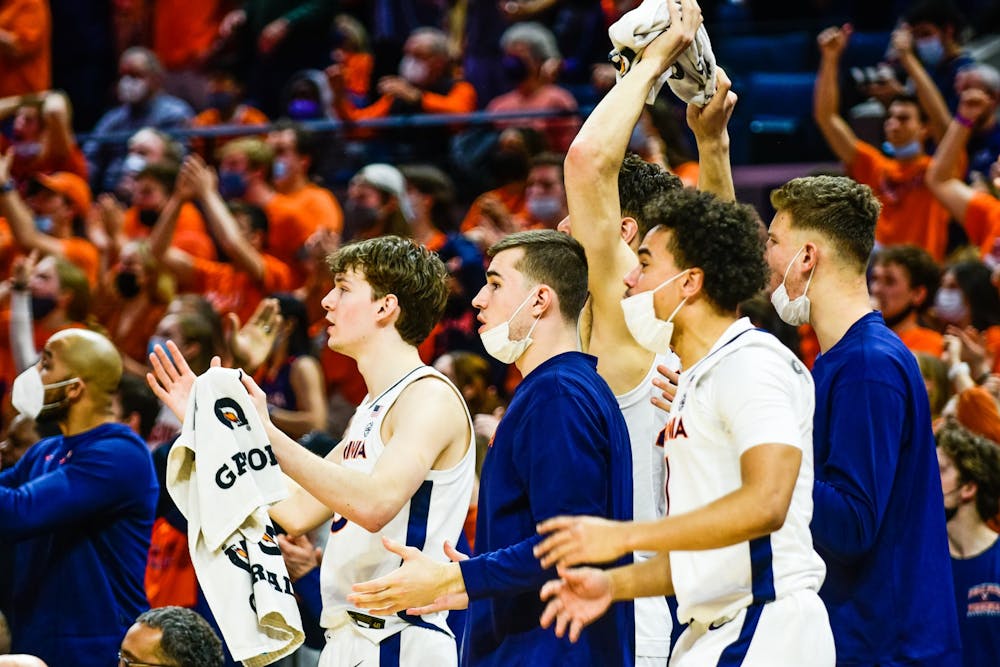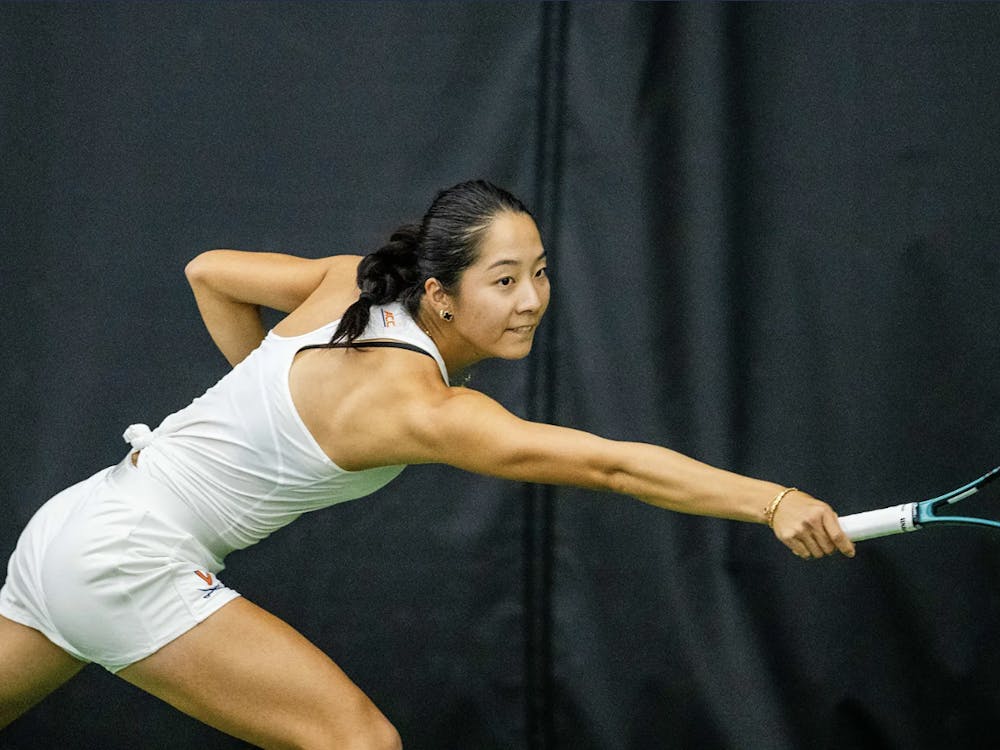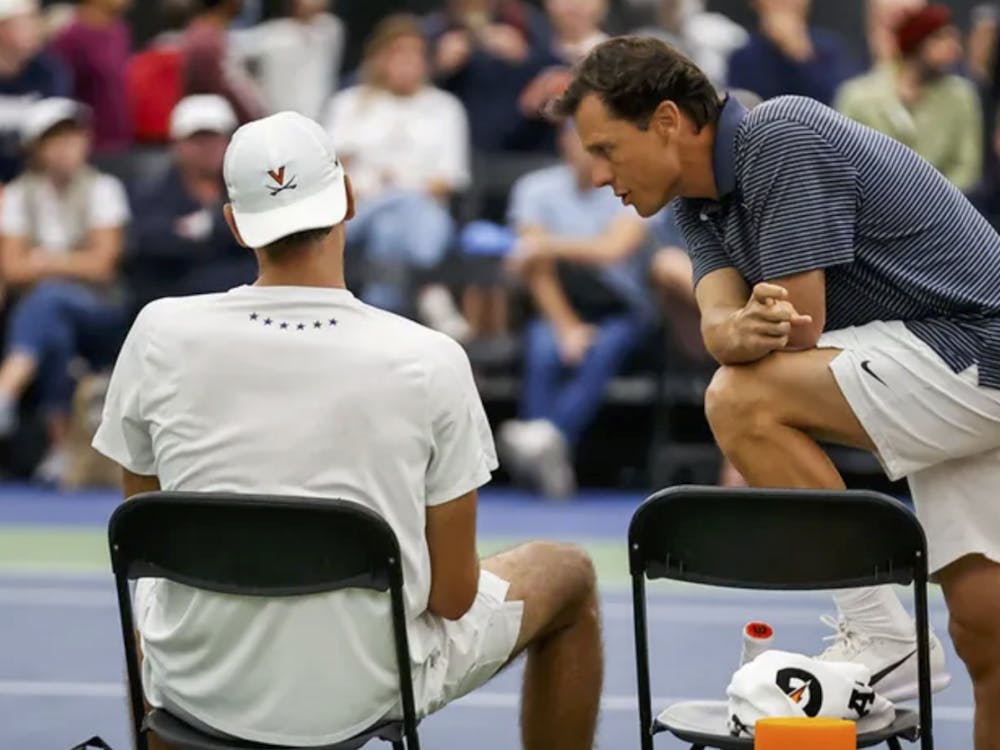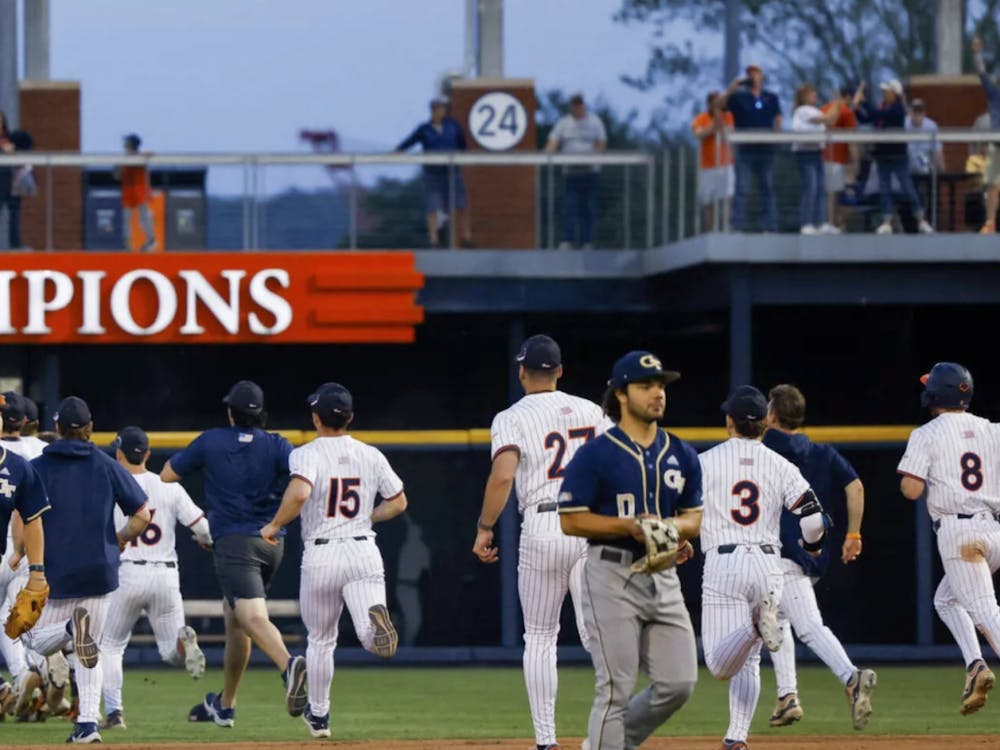Since Virginia basketball’s two-year peak between 2017 and 2019, the program has been in a steady decline. During those two seasons, Kyle Guy and company carried the Cavaliers to a pair of ACC regular-season titles, victory at the 2018 ACC tournament, No. 1-seeds in both 2018 and 2019 NCAA tournaments and the 2019 NCAA championship.
Downfall ensued. In 2019-20, Virginia struggled early but won their last eight regular season games, finishing second in the ACC before COVID-19 canceled the postseason. They won the ACC regular-season title in 2020-2021, but withdrew from the conference tournament due to COVID-19 and were upset by 13-seeded Ohio in the first round of the NCAA tournament.
Statistically, Virginia fell off in those two seasons. Using Ken Pomeroy's Adjusted Efficiency Margin, a measure of overall team performance, Virginia was first and second in the nation during its peak in the 2017-18 and 2018-19 seasons, but dropped to No. 42 and No. 19 in the following 2019-20 and 2020-21 seasons, respectively.
The bottom has fallen out this season. The once-mighty Cavaliers are now merely an average program for a power conference. Virginia has lost as many games this season as they did in the seasons between 2017 and 2020 combined. Coach Tony Bennett’s squad lost at home to welterweights Navy and at James Madison — No. 190 and No. 231 in AdjEM, respectively. Overall, the Cavaliers’ 19-13 (12-8 ACC) record and No. 84 ranking in AdjEM led to the team missing the NCAA tournament for the first time since 2013.
This begs the question — what went wrong for the Cavaliers? Why are they bound for the National Invitation Tournament instead of March Madness?
Scoring Droughts
The common thread of Virginia’s losses is a toothless offense — specifically, long runs without scoring. In almost every one of their 13 losses, the Cavaliers had a stretch where they just couldn’t put the ball in the basket.
In the loss to Navy, Virginia tied the game at 55 with 8:45 to play, then failed to score until junior guard and Indiana transfer Armaan Franklin sank a three-pointer with 15 seconds left. In the humiliating loss against JMU, the Cavaliers went 12:41 with only a single free throw towards the end of the first half. Facing elimination against North Carolina in the ACC tournament, Virginia failed to score for over seven minutes and an eight-point deficit became 22. Most of these enemy surges came in the second half with Virginia in contention. All of them ended with a demoralized Cavalier squad down and out of the game.
Poor Shooting
These poor runs were exacerbated by the Cavaliers’ terrible shooting. Virginia attempted 15.5 three-pointers per game, No. 350 in the country, and only made 32.2 percent of those threes, No. 259 nationally. Of Bennett’s seven-man rotation, only senior guards Kihei Clark and Kody Stattmann shot better than 35 percent on a combined six attempts per game — Franklin and senior forward Jayden Gardner — a transfer from East Carolina — both shot less than 27 percent on 5.5 combined attempts per game.
Compare this to the national championship season, when Virginia made 39.5 percent of its threes — albeit from behind a shorter three-point line, but still good for seventh in the nation. That season, four rotation players — Ty Jerome, De’Andre Hunter, Jay Huff and Guy — shot 40 percent or better from deep.
With the team shooting poorly, teams packed the paint and made life rough for inside presences like Gardner, junior center Francisco Caffaro and sophomore forward Kadin Shedrick, gumming up Tony Bennett’s preferred blocker-mover offense.
As a result, the Cavaliers had trouble getting the ball inside and attempted only 14.8 free throws a game, No. 314 in the nation. Even when they got to the charity stripe, Virginia shot only about as well as the average Power Five team.
Threes, layups and free throws are the most efficient shots in basketball. Virginia had trouble even taking these shots — let alone making them.
Breakdown of the Pack-Line
Under Bennett, the Cavaliers have been famous for running the Pack Line defense, a system that packs the paint and slows the tempo to suffocate opposing offenses. At its peak, Virginia ran the system flawlessly and rode it to easy victories. But the Pack Line relies heavily on teamwork, communication and five smart defenders playing hard defense, every second of every possession.
The Cavaliers were unable to muster that high-level of cohesion and hence missed this peak in 2022. After ranking No. 2, 1, 5, 1 and 36 in defensive efficiency over the last five years, the defense plummeted to No. 67 this season.
The Pack Line relies on one small, quick defender harassing the ball-handler while four players form an arc a few feet inside the three-point line and barricade the paint. While Clark and sophomore guard Reece Beekman have mastered the on-ball role, the unit behind them has faltered, often letting teams into the paint with too much ease or failing to contest three-pointers.
This may be a direct result of weak 2018 and 2019 recruiting classes from Bennett. While his systems have always been sound, recruitment has come and gone. Bennett has had to rely on transfers like Gardner and Franklin, who, while serviceable on offense, have been subpar on defense. They’ve only been learning the intricacies of the Pack Line for a season, whereas past starters had years of experience. This learning curve may be why the defense has been so leaky.
Pure Talent Deficit
I can talk about the numbers behind unlucky shooting, bad spacing and incoherent defense all day. In the end, though, Virginia regressed this year because of a talent deficit. The peak was the Guy-Jerome-Hunter trio. After that, Mamadi Diakite, Jay Huff, Trey Murphy Jr. and others came through the program and led a charge to the tournament. But this season’s crop of players just doesn’t have the same juice. Clark can’t shoot, pass or lead as well as Guy. Franklin shoots as much as Jerome did, but with worse results. Caffaro doesn’t measure up to the bigs that came before him. I could go on.
The players didn’t play well enough to make the NCAA tournament, but that’s not necessarily their fault. Tony Bennett had an all-time team for two seasons but flubbed the succession plan once the golden age ended. The following three seasons, Bennett’s classes ranked an average of 43rd and half of those recruits have transferred out.
This gives the next recruiting class a tall order — to be the talent that refuels the tank for the Cavaliers. 247sports rates Virginia’s incoming class as the ninth best in the country. However, they won’t play until November. For now, we must suffer through something worse than a tournamentless March — the NIT.
The sixth-seeded Cavaliers kick off their quest for a third NIT title Wednesday night at 7:30, when they will host third-seeded Mississippi State in the first round.





